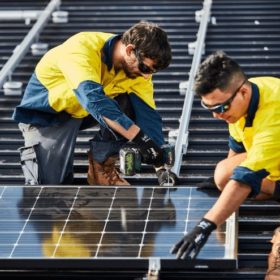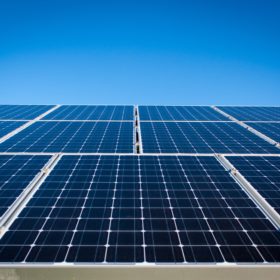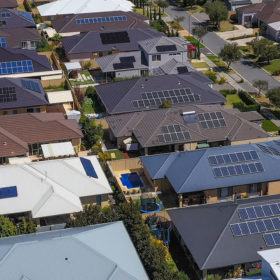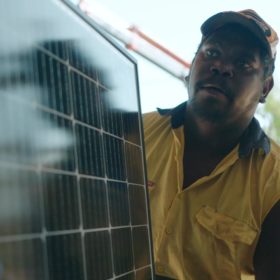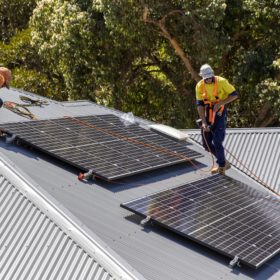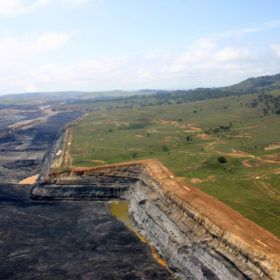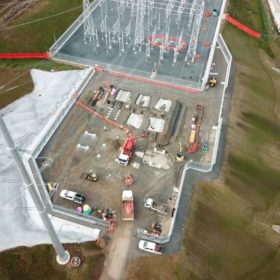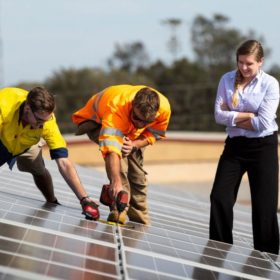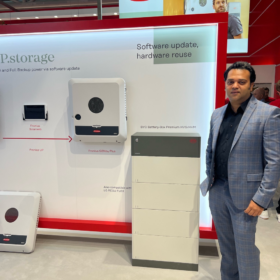Victorian Opposition unveils residential solar and storage strategy
Victorian Opposition Leader Matthew Guy has vowed to “turbo-charge renewables”, promising at least one million additional Victorian homes would have solar PV and battery energy storage systems installed by 2035 if the Coalition is voted in at the November state election.
Report shows South Australia on path to 100% renewables
South Australia is closing fast on its target to be powered by 100% net renewables by the end of the decade with new data revealing a combination of wind and solar energy provided a daily average of almost 70% of the state’s electricity needs last financial year.
‘We won’t sell solar in the South West’: changes in WA force installers into impossible position
Solar installers operating in Western Australia’s South West claim recent changes made by the sole network operator, Western Power, are forcing them into a no-win situation of either operating ‘unethically’ or haemorrhaging customers. And for regional customers, the changes mean installing a renewable system will likely see their household unable run basic household appliances without constantly tripping the power.
Rooftop solar cheaper for Indigenous NT communities than ground mounted, but benefit question remains
Rooftop solar systems are cheaper then centralised ground mounted systems for remote Indigenous communities in the Northern Territory, a new report funded by ARENA and APVI has found. The report, however, did not examine the question of community benefit in its scope – something Alan Langworthy, who has long worked in energy in the NT, told pv magazine Australia is absolutely vital.
RAA expands solar network as concerns spark demand
With the spike in global energy prices sparking increased interest in renewable technologies, the Royal Automobile Association of South Australia has expanded its solar PV and battery energy storage offerings through the acquisition of Adelaide-based installer Living Energy and Lovell Electrical.
OpenSolar gives installers access to new loans facility
Australian software company OpenSolar has expanded its partnership with fintech lender Plenti Group to give Australian solar installers the option to offer customers access to zero-interest payment plans in a bid “to make solar accessible to more people as quickly as possible”.
Coal plant closures adds sense of urgency to energy transition
The quickening exit of coal-fired generation from Australia’s energy mix – with 60% of capacity expected to be withdrawn from the National Electricity Market by 2030 – has emphasised the need for significant investment in renewable energy generation, storage, transmission, and system services.
AEMO reveals new roadmap for rapid switch to renewables
The Australian Energy Market Operator has declared approximately $12.7 billion of investment in new transmission lines should begin “as urgently as possible” to accelerate the transition to renewable energy and energy storage, replace exiting coal-fired power plants, and deliver a more efficient and effective grid in eastern and south-eastern Australia.
How the new round of SRES changes will alter the makeup of Australia’s solar industry
The Clean Energy Regulator has outlined the second round of changes coming to Australia’s solar rebate program, the small-scale renewable energy scheme (SRES). They primarily involve changing which body will manage solar designer and installer accreditations and who will publish approved solar panel and inverter equipment lists – both of which have formerly been the remit of the Clean Energy Council.
2021 snapshot: Australia’s distributed PV and storage uptake
Australia’s small-scale solar and battery energy storage installation rate has remained robust in the face of a number of challenges. By virtue of this resilience, it is adding jobs and contributing the country’s decarbonisation, reports Nikhil Jayaraj, the Managing Director of Regen Power.
